Laying turf
Laying turf is the quick way of creating a lawn, and your next option if you don’t want to go down the lawn seeding route. Laying turf will be a more expensive option to seeding, but many people feel that is a price worth paying for such an instant result. Good preparation of the soil is still vital for laying turf and the sequence below picks out the main principles you should look to follow.
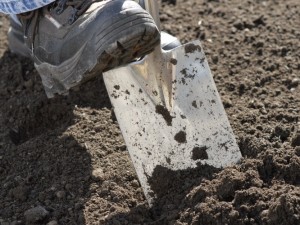 |
1. Remove any existing grass with a spade, before digging or rotivating the area to be turfed to a depth of about 15cm. Clear remaining stones and weeds. |
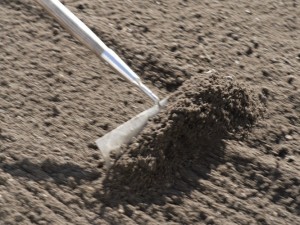 |
2. Rake the ground to smooth the surface then firm with your feet or ideally a roller. Repeat the process until the ground is level and the soil is firm. |
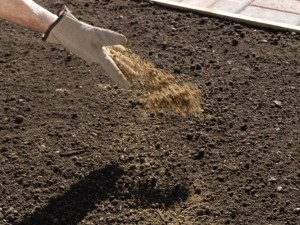 |
3. To establish turf more quickly, spread granular pre-turf fertiliser over the prepared soil – about 70g per square metre – and rake it in lightly. |
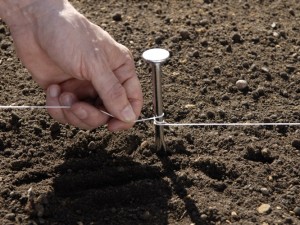 |
4. Measure out and mark the boundaries of the intended lawn area with a line strung between two metal pins, or use some wooden pegs if you prefer. |
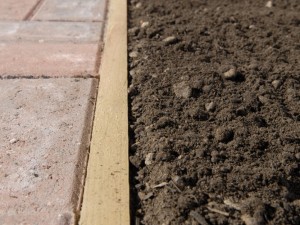 |
5. Make sure the soil is level with adjacent hard surfaces like paths and patios before you lay turf so that you will be able to mow up to them easily. |
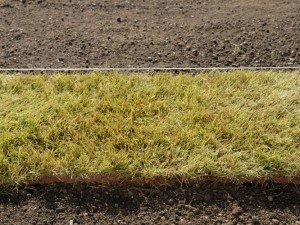 |
6. Lay the long edges of turf against the boundary line. Then cut the turf to fit with a long-bladed knife or half-moon edging iron. |
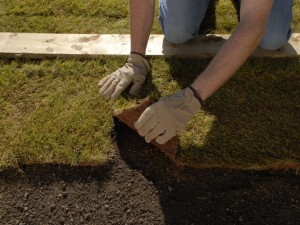 |
7. Work from a straight side, on a board placed on the turfs you have already laid, to continue laying turf across the site. Butt ends together, and stagger joints as you gradually build up row after row of turf. |
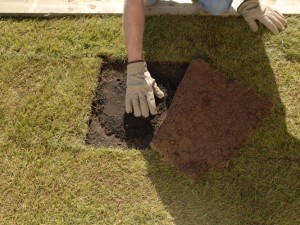 |
8. When all the turf is laid, you can peel back the turf to fill any hollows with fine topsoil, and gently brush topsoil into any small gaps you find between turf. |
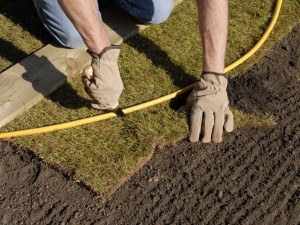 |
9. Tidy edges with a long-bladed knife or half-moon edging iron. Curved edges are easily marked with a hose pipe or trail of kiln-dried sand. |
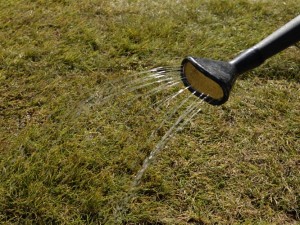 |
10. Be sure to give the turf a good watering immediately after laying as this will help establish the turf. |
Turf tips
- Water new lawns thoroughly every day in spring and summer with a sprinkler until the newly-laid turf is well established.
- Avoid walking on your new lawn, if possible, for a few weeks to allow the root system to become established.
- You know that a new lawn has taken root when you attempt to lift an edge of turf and it won’t come up. Then you can cut the lawn with the blades of the mower at the highest setting. Thereafter, mow regularly, but set the mower to ensure you don’t remove more than a third of the grass height.
- If a lawn is laid in spring its a good idea to feed it after two months with lawn fertiliser.
- Rolls of turf are heavy, particularly if they contain a lot of moisture. You may need help lifting them in position.
- When plants spill out of a border, onto the lawn, it can make mowing difficult. If you border the lawn with bricks or slabs, set just below the level of the grass, this won’t be so much of a problem. You won’t need to maintain neat grass edges to beds either.
- Unless you’re buying one or two rolls, it’s always best to get turf delivered, and remember to check any deals your local garden centre may have.
